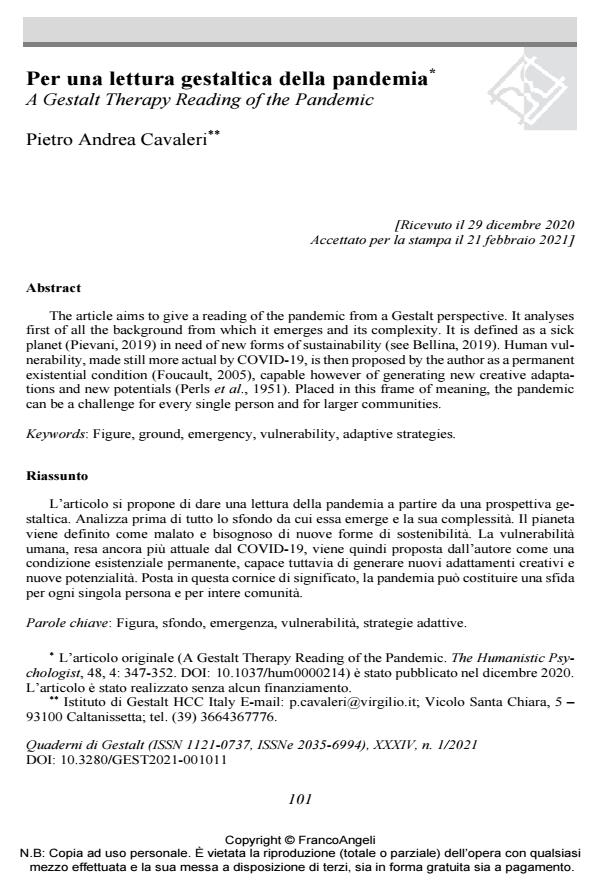A Gestalt Therapy Reading of the Pandemic
Journal title QUADERNI DI GESTALT
Author/s Pietro Andrea Cavaleri
Publishing Year 2021 Issue 2021/1
Language Italian Pages 8 P. 101-108 File size 156 KB
DOI 10.3280/GEST2021-001011
DOI is like a bar code for intellectual property: to have more infomation
click here
Below, you can see the article first page
If you want to buy this article in PDF format, you can do it, following the instructions to buy download credits

FrancoAngeli is member of Publishers International Linking Association, Inc (PILA), a not-for-profit association which run the CrossRef service enabling links to and from online scholarly content.
The article aims to give a reading of the pandemic from a Gestalt perspective. It analyses first of all the background from which it emerges and its complexity. It is defined as a sick planet (Pievani, 2019) in need of new forms of sustainability (see Bellina, 2019). Human vul-nerability, made still more actual by COVID-19, is then proposed by the author as a perma-nent existential condition (Foucault, 2005), capable however of generating new creative adap-tations and new potentials (Perls et al., 1951). Placed in this frame of meaning, the pandemic can be a challenge for every single person and for larger communities.
Keywords: Figure, ground, emergency, vulnerability, adaptive strategies.
Pietro Andrea Cavaleri, Per una lettura gestaltica della pandemia in "QUADERNI DI GESTALT" 1/2021, pp 101-108, DOI: 10.3280/GEST2021-001011